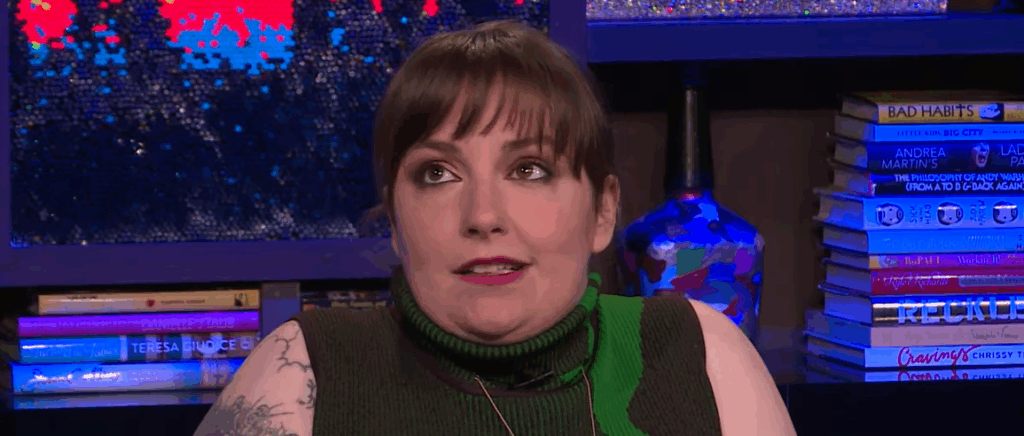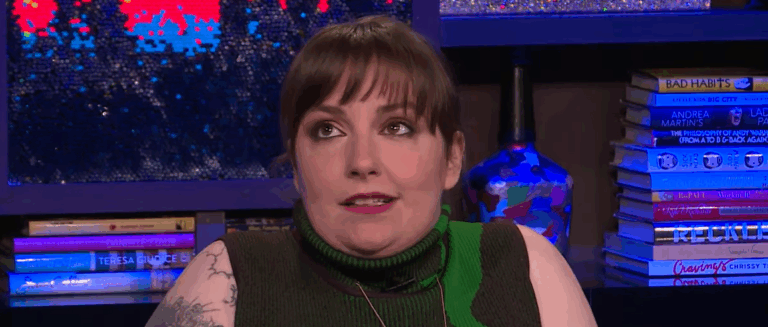Lena Dunham has utilized her personal connections as artistic springboards during the last ten years. Her collaboration with musician Jack Antonoff stands out among them, in part because the effects of their time together still influence her public and artistic persona. Both were thriving creatively when they started dating in 2012; he was the guitarist for fun. and was soon to become a successful producer, while she was the breakout auteur behind Girls. Because their dynamic was so unusually relatable—awkward, intense, intellectual, and deeply modern—their five-year relationship became a benchmark for fans.
Dunham started documenting the emotional turmoil by the time they made their split public in early 2018. Her Vogue essay marked a change in her emotional vocabulary as an artist as well as in her personal life. She diagnosed the slow deterioration of intimacy, a bewildering silence that felt more difficult than any heated argument, rather than merely describing the breakdown of a relationship.
Speculation has been rekindled in recent years, particularly with the release of her romantic comedy Too Much on Netflix. The show centers on Jessica, a woman who moves to London following her breakup with Zev, an emotionally distant, indie music-loving man with a penchant for intellectual superiority. Despite being fictional, this character’s tone and rhythm are remarkably similar to Jack Antonoff’s public persona. Lena has maintained that Zev is a composite and denied that he is based entirely on Antonoff. However, some critics and even fans don’t buy it at face value.
It seems as though Dunham is taking back narratives that were previously out of her control by using storytelling to weave emotional truths. Ironically, the phrase that gave her show its name was used to describe her experience of being told she was “too much” by a man during the Too Much promotional run. Although the ex who said that was never identified, Antonoff’s name has persisted in public conjecture given the timeline.
Lena Dunham & Jack Antonoff: Personal and Career Overview
| Name | Lena Dunham |
|---|---|
| Born | May 13, 1986 (New York City, USA) |
| Occupation | Writer, Director, Actress, Producer |
| Famous Works | Girls, Tiny Furniture, Sharp Stick, Too Much |
| Relationship | Jack Antonoff (2012–2018) |
| Current Spouse | Luis Felber (married 2021) |
| Key Awards | Golden Globe, DGA Award, Independent Spirit |
| Education | Oberlin College (BA, Creative Writing) |
| Reference | Lena Dunham – Wikipedia |
| Name | Jack Antonoff |
|---|---|
| Born | March 31, 1984 (Bergenfield, NJ, USA) |
| Occupation | Musician, Producer, Songwriter |
| Famous Projects | Bleachers, fun., Producer for Taylor Swift, Lorde |
| Relationship | Lena Dunham (2012–2018) |
| Post-breakup Partners | Carlotta Kohl, Margaret Qualley (wife) |

The parallels are further enhanced by the show’s subplots. After their relationship problems get out of hand, Jessica and Zev decide to rehome the dog they adopted. This particular detail bears a striking resemblance to the controversy surrounding Dunham and Antonoff’s return of their dog, Lamby, in 2017 due to behavioral issues. A clear example of how criticism disproportionately follows women in public breakups is the fact that Lena, not Jack, was the target of online backlash.
It is easy to see how their story reflects a common cultural pattern when placing these moments in a larger media ecosystem. Men are praised for advancing effectively, while women are frequently expected to analyze, evaluate, and defend every emotional reaction. With successful projects for Taylor Swift and his new partner Margaret Qualley, Antonoff’s career took off after the split. Dunham’s artistic creations, meanwhile, were frequently scrutinized for indications of unresolved pain. The stark disparity is a sign of enduring gendered expectations.
Dunham once expressed in interviews how disappointed she was to see Antonoff dating someone more “conventionally attractive” following their breakup. In 2018, she acknowledged, “I felt I was proving weird girls could have love too.” This one statement struck a chord with many people, particularly women who have experienced a similar sense of being ignored after their former partners moved on to more conventionally desirable partners. It brought to light an emotional nuance that is rarely expressed out loud with such sensitivity.
Dunham transforms her heartbreak into art by dramatizing it, not merely reliving the agony. She uses Too Much to rethink emotional closure according to her own standards. Viewers are drawn into a story where self-respect frequently shows up subtly after the credits have rolled, love is messy, and healing isn’t linear.
Viewers are prompted to consider how stories change when one partner turns into an emotional archivist and the other into a silent chapter by the show’s imaginative decisions. Antonoff, who is currently married to Margaret Qualley, has said very little about the topic. His quiet stands in sharp contrast to Dunham’s expressive healing catalog, which includes books, essays, and scripts that meticulously document her emotional reconstruction.
Beyond their fan bases, their story has societal repercussions. It stimulates discussions about relationship visibility, emotional labor, and how women turn personal suffering into growth for the public. Additionally, it reinterprets the notion that resolution must be tidy or reciprocal. Sometimes, your ex is posing as a literary jerk named Zev in a Netflix series.
Whether she wanted it or not, Lena Dunham has always welcomed criticism. However, few of her peers can match the artistic courage that she possesses in her vulnerability. She provides a guide for people attempting to rebuild themselves after being broken by someone who simply failed to see their value by embracing the uncomfortable, the messy, and the personally upsetting.


